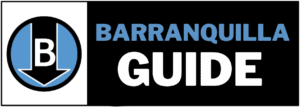Colombia is known for its unique social structure, particularly the “Estrato” or “Stratum” system. This system plays a significant role in shaping various aspects of Colombian society, including housing, utilities, and even social interactions. In this article, we’ll delve into the intricacies of the Estrato system, exploring its origins, implications, and ongoing relevance.
The Origins of the Estrato System
The Estrato system in Colombia traces its roots back to the mid-20th century. The system emerged as a classification tool to evaluate the socioeconomic conditions of different neighborhoods and communities in Colombia. It was introduced as a way to categorize households based on income, access to services, and living conditions. The system aimed to facilitate the provision of public services and utilities by tailoring pricing and subsidies according to the socioeconomic status of each household.
Understanding de Estrato System in Colombia
The Estrato system assigns distinct strata, labeled from 1 to 6, to classify neighborhoods and households. 1 represents the lowest while 6 represents the highest stratum. A combination of factors, including income, education, and the overall quality of living conditions in a particular area, determines these strata. Each stratum indicates a varying level of access to services and amenities like water, electricity, sanitation, and public infrastructure.
For foreigners looking to make the move to Colombia, the estrato system will seem like a strange concept. When looking at apartments, you should always ask the landlord or real estate company what estrato the apartment is classified as. Most foreigners prefer to live in estratos 4, 5, or 6. In Barranquilla, most new estrato 4, 5 and 6 developments will include a pool, gym, and private parking spot. Newer estrato 3 developments can also be taken into consideration if on a budget. Ciudad Mallorquin, a new housing development currently under construction, is a great option for an estrato 3 budget-friendly apartment. If you’re unsure what barrio to call home, be sure to read our article on Neighborhoods of Barranquilla.
It should be noted that estratos 5 and 6 subsidize the utility bills for estratos 1, 2 and 3. This means that if you live in estratos 5 and 6 your utility bills will be higher than that of lower estratos. This includes water, gas, electricity, cable and internet bills.

Implications for Daily Life
The implications of the Estrato system extend beyond just a classification on paper. They significantly influence the quality of life for individuals living in different strata. Residents of higher strata tend to enjoy better access to services, improved infrastructure, and safer neighborhoods. In contrast, those in lower strata often face challenges such as inadequate public services, limited opportunities for advancement, and a lack of social mobility.
Economic Disparities and Social Dynamics
While the system was initially intended to address disparities and provide targeted assistance, it has also contributed to the perpetuation of economic inequalities. Lower strata residents might find it difficult to break free from the constraints of their classification due to limited access to quality education and employment opportunities. This situation can reinforce existing social divides and hinder upward mobility.
Ongoing Relevance and Criticisms
Over the years, the Estrato system has garnered both support and criticism. Supporters argue that it has enabled the government to allocate resources more efficiently and tailor policies to the specific needs of different communities. However, critics point out that the system can lead to discrimination and stigmatization based on socioeconomic status. Additionally, some argue that it has failed to address the root causes of inequality and has, in some cases, exacerbated them.
Conclusion
The Estrato system remains an integral part of Colombian society, shaping the daily lives of its citizens and impacting their access to essential services. While it has undoubtedly contributed to targeted resource allocation, it’s crucial to continue discussing its implications and seek ways to minimize its negative effects. As Colombia progresses into the future, finding a balance between addressing economic disparities and promoting social cohesion will be key to creating a more inclusive society for all.


[…] Understanding Colombia’s Estrato System […]
The Estrato system funcions in a similar way that postal codes do in London or Los Angeles etc.
To Paulette Romero , could you tell me more about the famous area in Alto Prado that has very special architectural style houses and streets.
gracias
David Hampton.